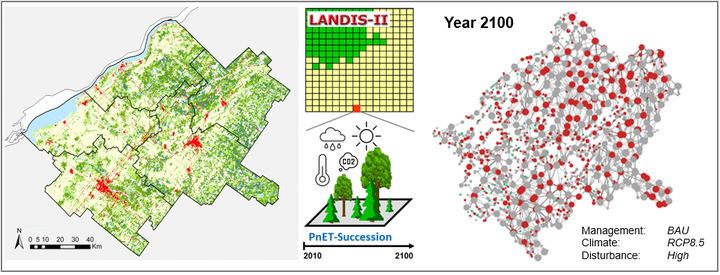Network analysis can guide resilience-based management in forest landscapes under global change

Abstract
Forests are projected to undergo dramatic compositional and structural shifts prompted by global changes, such as climatic changes and intensifying natural disturbance regimes. Future uncertainty makes planning for forest management exceptionally difficult, demanding novel approaches to maintain or improve the ability of forest ecosystems to respond and rapidly re‐organize after disturbance events. Adopting a landscape perspective in forest management is particularly important in fragmented forest landscapes where both diversity and connectivity play key roles in determining resilience to global change. In this context, network analysis and functional traits combined with ecological dynamic modeling can help evaluate changes in functional response diversity and connectivity within and among forest stands in fragmented landscapes. Here, we coupled ecological dynamic modeling with functional traits analysis and network theory to analyze forested landscapes as an interconnected network of forest patches. We simulated future forest landscape dynamics in a large landscape in southern Quebec, Canada, under a combination of climate, disturbance, and management scenarios. We depicted the landscape as a functional network, assessed changes in future resilience using indicators at multiple spatial scales, and evaluated if current management practices are suitable for maintaining resilience to simulated changes in regimes. Our results show that climate change would promote forest productivity and favor heat‐adapted deciduous species. Changes in natural disturbances will likely have negative impacts on native conifers and will drive changes in forest type composition. Climate change negatively impacted all resilience indicators and triggered losses of functional response diversity and connectivity across the landscape with undesirable consequences on the capacity of these forests to adapt to global change. Also, current management strategies failed to promote resilience at different spatial levels, highlighting the need for a more active and thoughtful approach to forest management under global change. Our study demonstrates the usefulness of combining dynamic landscape scale simulation modeling with network analyses to evaluate the possible impacts of climate change as well as human and natural disturbances on forest resilience under global change.